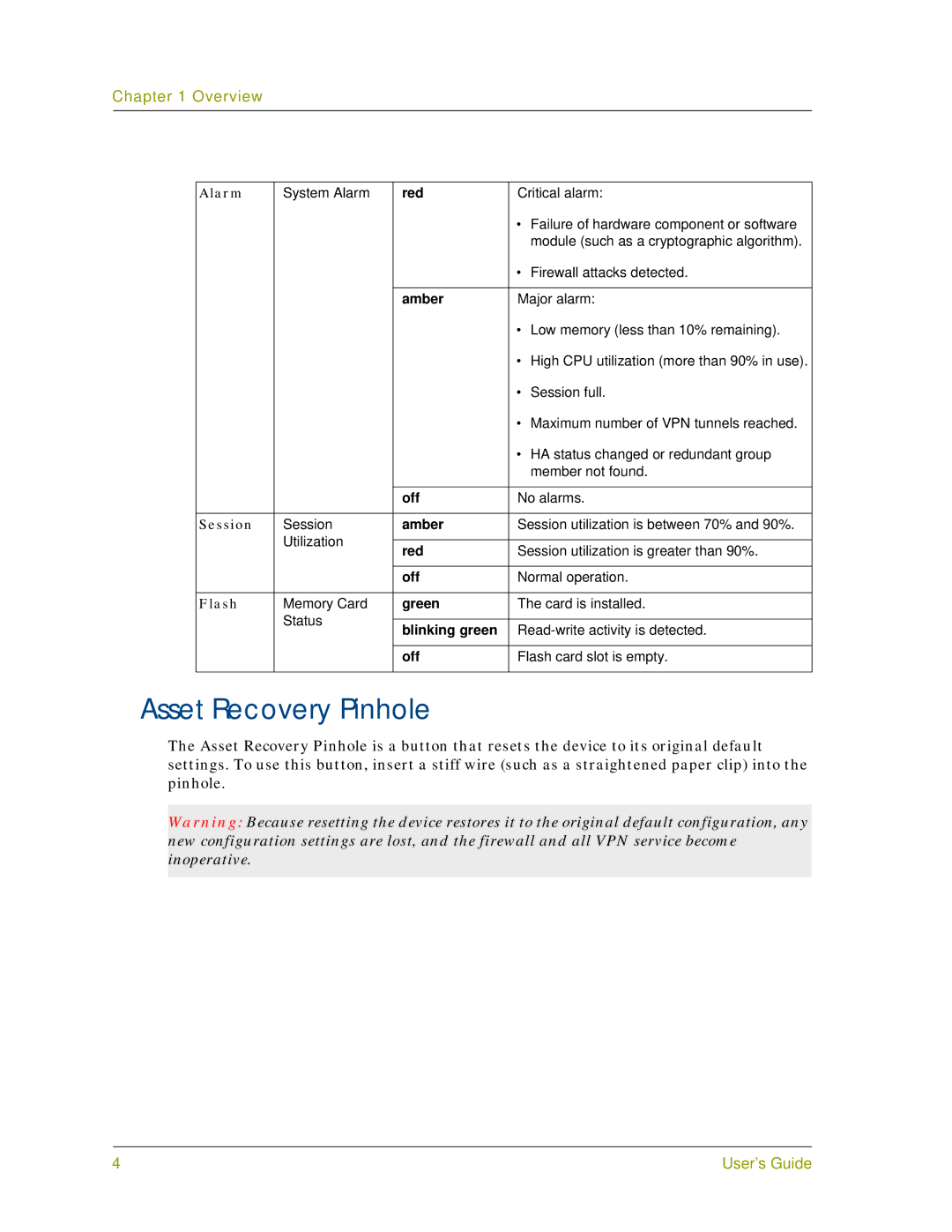
Chapter 1 Overview
Alarm | System Alarm | red | Critical alarm: | |
|
|
| • Failure of hardware component or software | |
|
|
|
| module (such as a cryptographic algorithm). |
|
|
| • | Firewall attacks detected. |
|
|
|
| |
|
| amber | Major alarm: | |
|
|
| • | Low memory (less than 10% remaining). |
|
|
| • | High CPU utilization (more than 90% in use). |
|
|
| • | Session full. |
|
|
| • | Maximum number of VPN tunnels reached. |
|
|
| • | HA status changed or redundant group |
|
|
|
| member not found. |
|
|
|
| |
|
| off | No alarms. | |
|
|
|
| |
Session | Session | amber | Session utilization is between 70% and 90%. | |
| Utilization |
|
|
|
| red | Session utilization is greater than 90%. | ||
|
| |||
|
|
|
| |
|
| off | Normal operation. | |
|
|
|
| |
Flash | Memory Card | green | The card is installed. | |
| Status |
|
|
|
| blinking green | |||
|
| |||
|
|
|
| |
|
| off | Flash card slot is empty. | |
|
|
|
|
|
Asset Recovery Pinhole
The Asset Recovery Pinhole is a button that resets the device to its original default settings. To use this button, insert a stiff wire (such as a straightened paper clip) into the pinhole.
Warning: Because resetting the device restores it to the original default configuration, any new configuration settings are lost, and the firewall and all VPN service become inoperative.
4 | User’s Guide |
